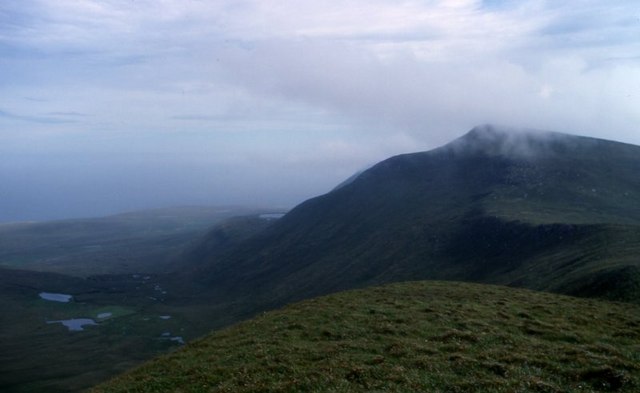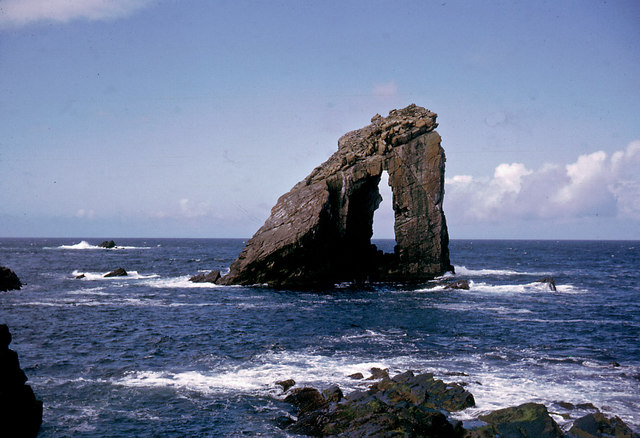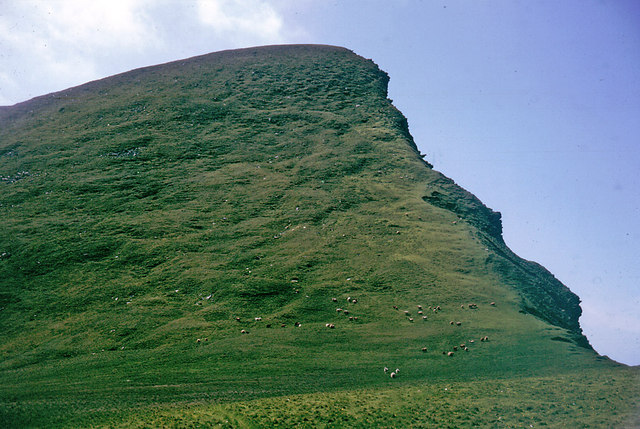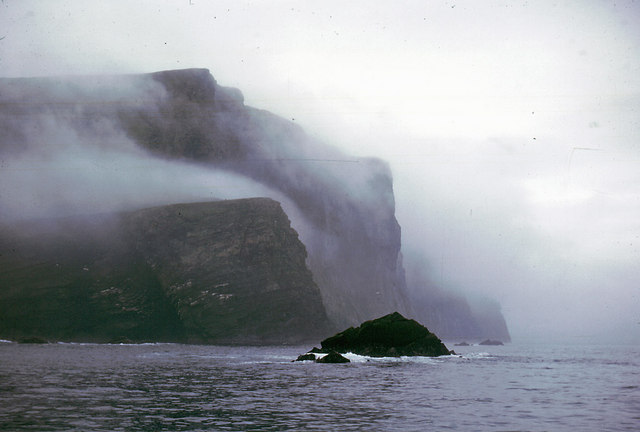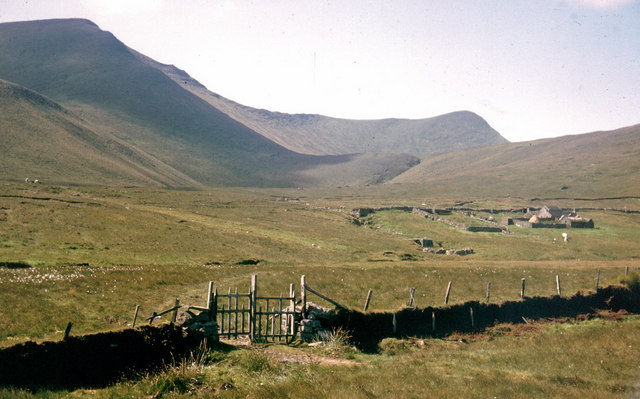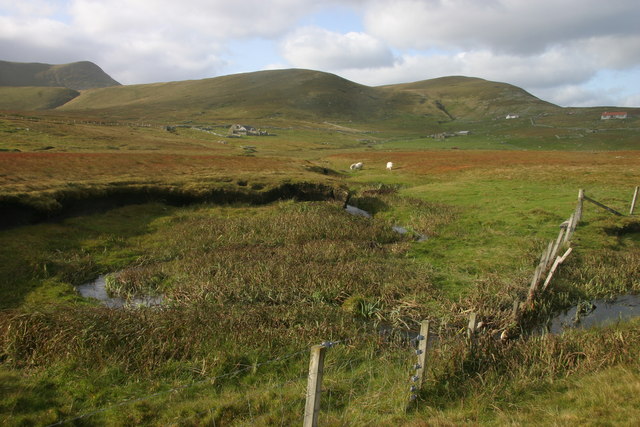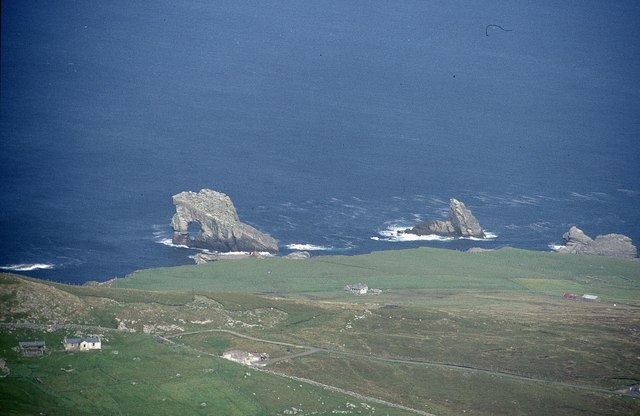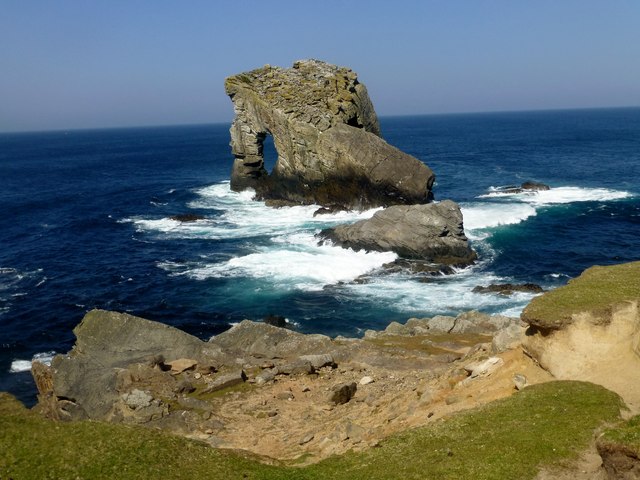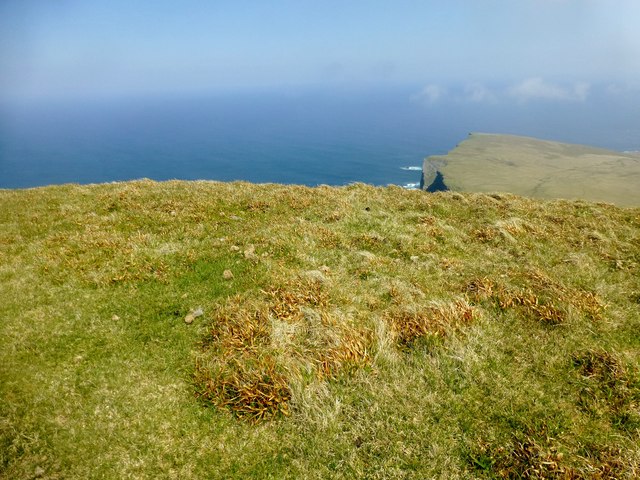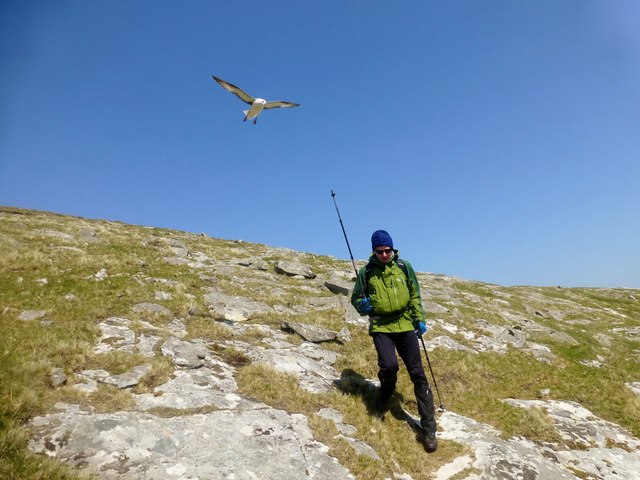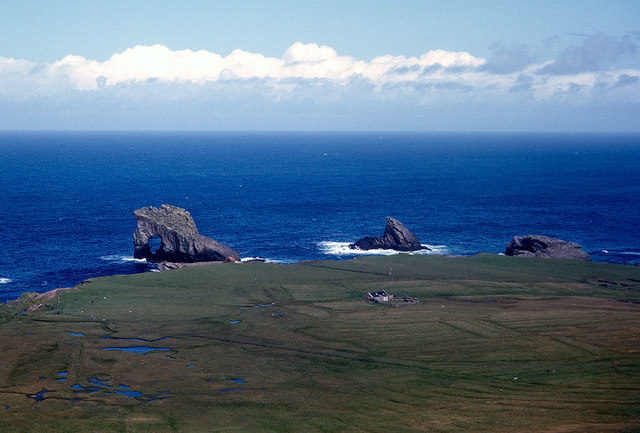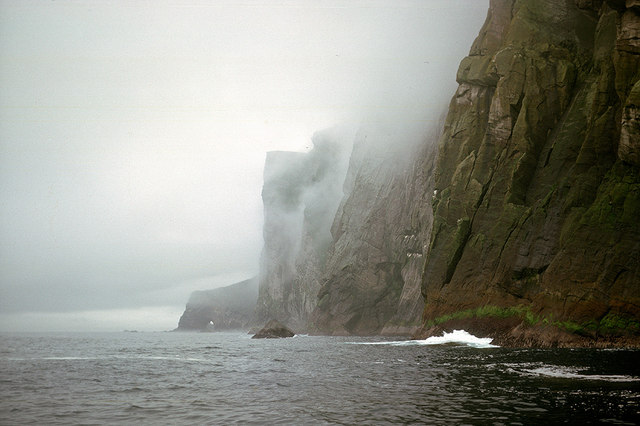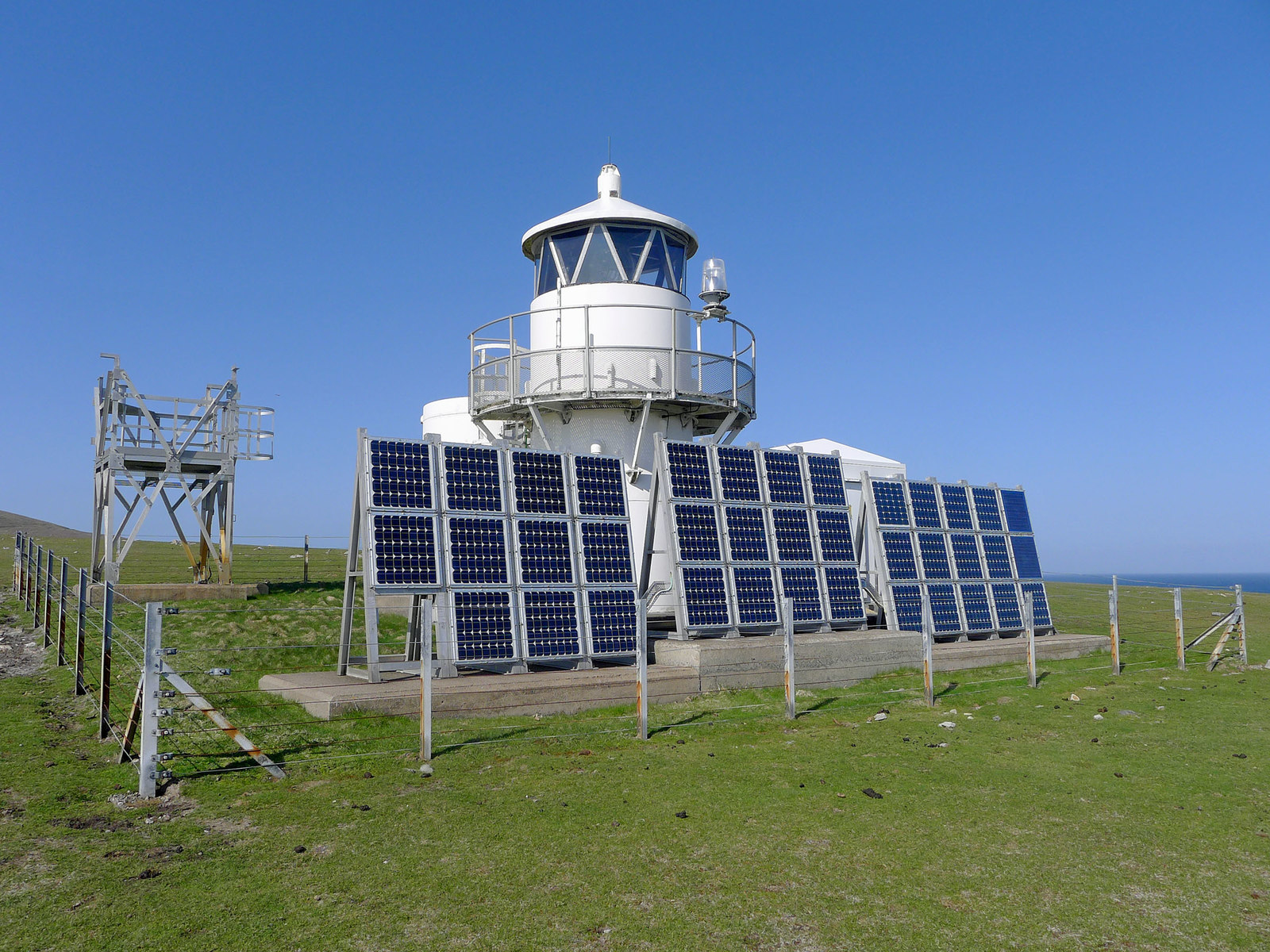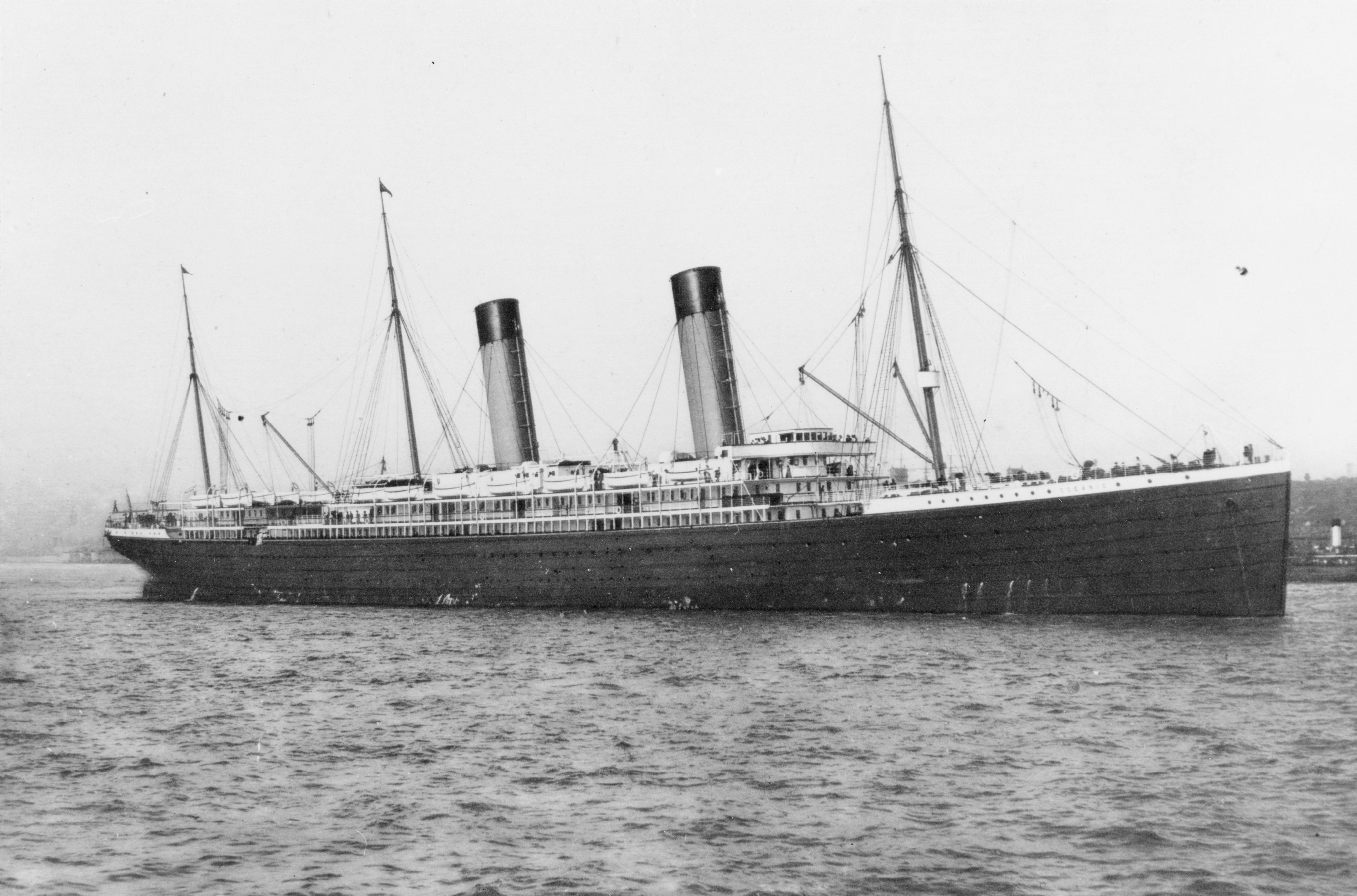Summons Head
Coastal Feature, Headland, Point in Shetland
Scotland
Summons Head
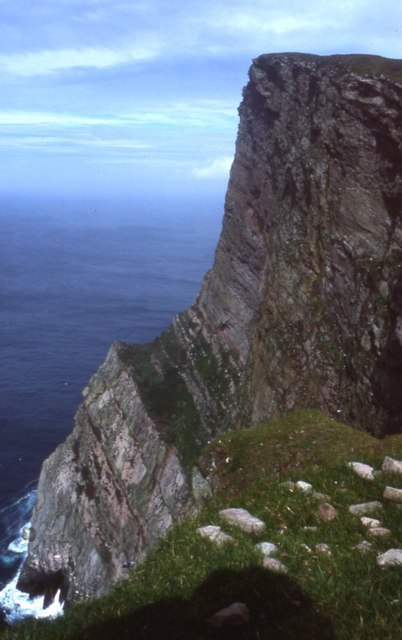
Summons Head is a prominent coastal feature located in the Shetland Islands, which are part of Scotland. It is classified as a headland or a point, as it extends out into the North Sea. The headland is situated in the southwestern part of the Shetland mainland, near the town of Sandwick.
Summons Head is characterized by its rugged and dramatic cliffs that rise steeply from the sea, reaching heights of up to 180 meters (590 feet). The cliffs are composed of layers of sedimentary rocks, displaying various colors and textures, creating a visually striking landscape. The headland offers breathtaking panoramic views of the surrounding coastline and the vast expanse of the North Sea.
The area around Summons Head is known for its diverse wildlife and natural beauty. The cliffs provide nesting sites for a variety of seabirds, such as puffins, guillemots, and fulmars. Visitors to Summons Head may also catch a glimpse of seals basking on the rocks or swimming in the nearby waters.
Access to Summons Head is relatively easy, with a footpath leading from the nearby village of Hoswick. The path offers a pleasant walk along the coastline, allowing visitors to fully appreciate the rugged beauty of the area. The headland is also a popular destination for birdwatchers and nature enthusiasts, who come to observe the abundant wildlife and experience the peacefulness of the surroundings.
In summary, Summons Head is a striking coastal feature in the Shetland Islands, renowned for its towering cliffs, diverse wildlife, and stunning panoramic views. It is a must-visit destination for anyone seeking to explore the natural wonders of the area.
If you have any feedback on the listing, please let us know in the comments section below.
Summons Head Images
Images are sourced within 2km of 60.151322/-2.0980155 or Grid Reference HT9440. Thanks to Geograph Open Source API. All images are credited.
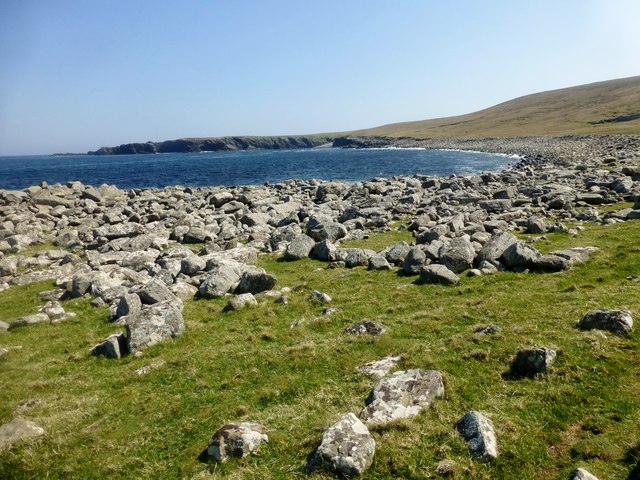
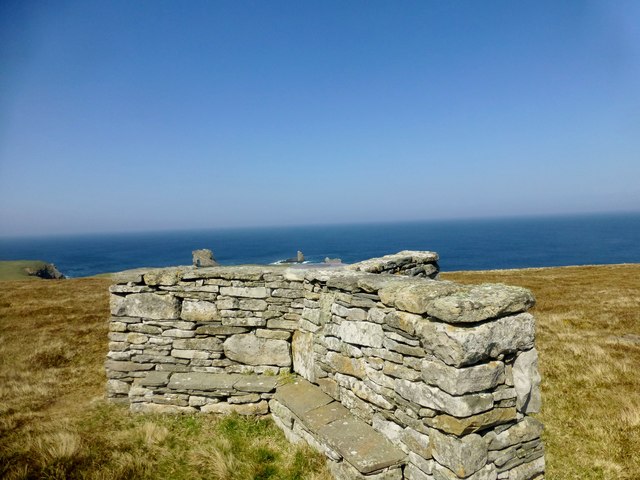
Summons Head is located at Grid Ref: HT9440 (Lat: 60.151322, Lng: -2.0980155)
Unitary Authority: Shetland Islands
Police Authority: Highlands and Islands
What 3 Words
///lobbed.date.conquests. Near Walls, Shetland Islands
Nearby Locations
Related Wikis
Foula
Foula (), located in the Shetland archipelago of Scotland, is one of the United Kingdom's most remote permanently inhabited islands. Owned since the turn...
Foula Airfield
Foula Airfield (IATA: FOA) is an airfield located on the remote island of Foula, part of the Shetland Islands in the north of Scotland. == History == The...
RMS Oceanic (1899)
RMS Oceanic was a transatlantic ocean liner built for the White Star Line. She sailed on her maiden voyage on 6 September 1899 and was the largest ship...
Nearby Amenities
Located within 500m of 60.151322,-2.0980155Have you been to Summons Head?
Leave your review of Summons Head below (or comments, questions and feedback).
